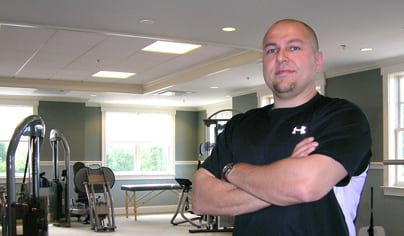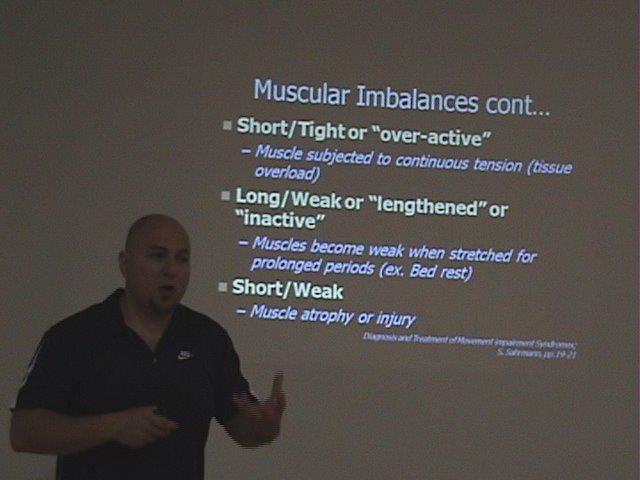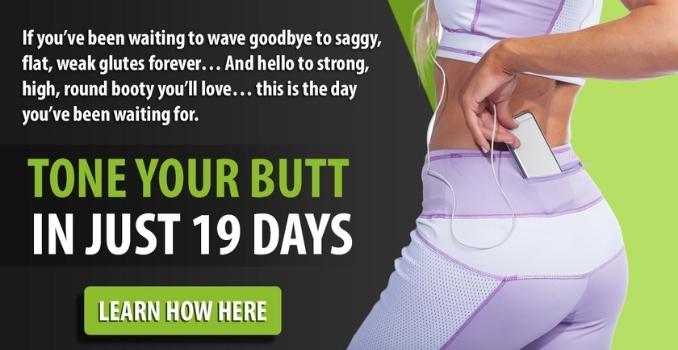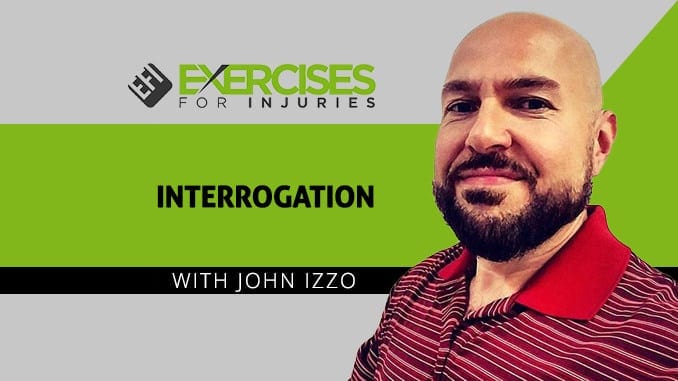
I am very excited to announce this: one of the contributors for the next edition of MIR is John Izzo. I have known John for a few years and have enjoyed his products (Shatterproof Spine and Lunging to Improved Performance).
This is one of the hip stability exercises that I got from his Lunging to Improved Performance DVD, which I like:
John Izzo Glute Exercise
John Izzo Glute Exercise Description
I know some people at EFI don’t know John, so I asked if he could do a quick Question and Answer session with me. Have a read below, and if you have any questions for John, please leave them in the comment area.
John Izzo Interrogation
Rick – John, some people might not know who you are. Could you take a minute to give people a bit of background?
Rick, thanks for taking the time to do this interview with me. I wear many “fitness hats.” I have been a personal trainer since 1999. Having worked in commercial, corporate, non-profit, and private fitness facilities, I have served as a fitness director and training director.
I have written articles for online publications and have contributed to various NASM educational materials. I am also an educator that teaches classes for a significant certification organization since 2002. In 2010, I finally started my own small business doing personal training, IZZOstrength.
My love for weight training began early in life and has enabled me to find a stable passion for coaching others. I train my clients at my facility and manage/train golfers at a private country club.
Rick – As experienced personal trainers, you and I know the importance of assessment. How do you incorporate assessment with your group training clients?
Performing assessments with one on one clients is simple. I use the NASM overhead profile test for possible dysfunctions–but I don’t limit myself to it. I use it to confirm what I find during specific movements. Keeping a watchful eye on 4-5-10-15 bodies tends to be somewhat tedious when it comes to group training.
Typically, during group classes, the warm-up is the initial method I use to assess specific “benchmarks” in my clients.
The extensive benchmarks are:
- knee valgus/varus
- protracted shoulders
- pelvic tilt
- foot position.
Because of my class flow, I am attentive to what my clients can do.
In a group setting, I tend to separate what a client can typically do (what’s normal to them) and optimally (what I try to accomplish). My assessment never ends because I seek to improve these four aspects.
There are many other things I look for that come under my radar during exercise execution, like:
- over-active traps (shrugging up on face-pulls)
- degree of hip extension
- core bracing
- most of all—coach-ability
I ask myself: How tentative are my participants?
That is very important, and if they are not receiving my coaching adequately, I need to do a better job instructing them. So, I evaluate my coaching cues, directions, and class circuit.
In a group setting, observation is the best assessment. I can’t tell you how often I find that trainers stop paying attention in boot camp classes and focus on fatigue. Observational assessment is an ongoing process if you know what to look for. I adopt JC Sanatana’s philosophy, “every exercise is an assessment.”
Rick – There is a big focus on corrective exercise and addressing muscle imbalances. How does that incorporate into your training programs with your clients and group sessions?
I typically begin with learning what the client does most of the day.
Next, I eyeball their posture.
We perform the opposite positions of what they do all day.
No client in my facility ever performs exercises sitting. We do all standing exercises (shoulder, cable, woodchops, etc.).
I incorporate treadmills or versa climber work for people that sit all day. We isolate inhibited muscles during rest periods (band walks between sets of a compound exercise). We perform 90% closed-chain exercises. Teaching clients the importance of using the ground as a force lever is the first thing they learn about body awareness.
We also address muscle imbalances in the warm-up/movement prep, but mostly it is incorporated into active recovery periods. With groups, I tend to put corrective work in a circuit as a “rest” if the course comprises challenging exercises.
Lunging to Improved Performance DVD
For instance, if there is a 4 exercise circuit containing sled dragging, lunging, and push-ups, I will include something simple like angled low trap raises or band external rotation.
Rick – You are a few personal trainers who blog and write training concepts for other personal trainers. How did the blog start, and why did you do it?
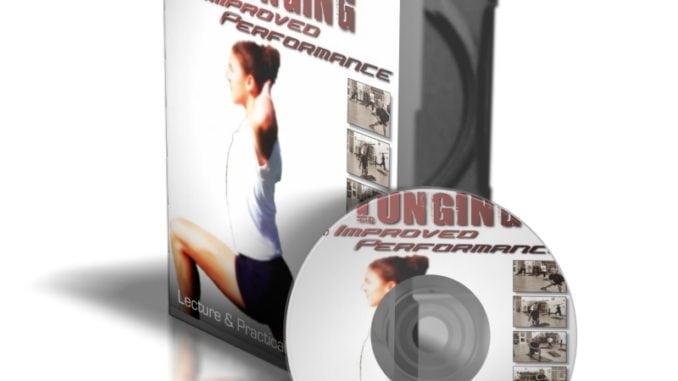
If you notice, I am not one to create exercise programs for people online. I am solicited for programs, but I RARELY give specific advice because I don’t believe in giving people that don’t work with me–personally or exclusively– advice without meeting or assessing.
Final Word
Trainer Advice was a blog that became popular simply because people liked my advice. I’ve hired and fired trainers since 2005, so I tend to educate them on the “intangibles” of personal training: interview process, client retention, selling, self-respect, peer acceptance, and exercise program fruition. I have gained respect and notoriety for “being real.” And I am grateful to be regarded as a trainer that spreads “real” advice.
Most of the info you get nowadays is watered-down, copied, or repeated.
God knows now everyone gives trainers advice, writes books, or proclaims to be a guru.
I like to think that I “really do” and have been since 2005.
Blogs, to me, are meant to be fun and easy to write. My blog posts are simple because I love to write. Rarely do I research stuff for a blog post.
I have a life to live and don’t have time to research simple blog posts. I only write about what I know and feel is essential to cover. If I spend time researching, I will submit the article for compensation.
Rick – What would be the biggest tip you would give a trainer who has to train their first golfer?
I am fortunate enough to work closely with a massage therapist. With that being said, when I meet with a golfer—it is typically a male that sits in his office all day and needs to get out to meet with the guys or make some dealings over a game of golf. These men are usually stiff, immobile, and over 50.
I tend always to persuade them to get regular massage therapy to manipulate the tissue a bit so that I can go in and help them stretch. In my dealings with golfers, I have found that most men need flexibility, and most women need more strength.
Rick – You have a warm-up component to your group training. What does that look like?
Warm-up for my group training looks something like this:
- Arm circles 20x per direction Toy Soldiers (in place) 20 per side
- Reverse Lunges in Place 10 per side
- Jumping Jacks 15x
- Behind the back Chest/Rib Cage Stretch
- Toe Touch Ham Stretch
And then we are off.
The first circuit of my group training class is typically straightforward and geared to “prepare” their bodies for the open, more challenging courses.
Rick: What are the other components in your group training sessions?
I like to integrate a boxing component. People with stressful jobs want to release that stress, which can come by punching a bag or punching the mitts with me. Typically, my class likes to hit the mitts with me because I tend to egg them on 🙂
I also include a metabolic circuit at the very end of the session.
With smaller groups, I will place everyone on a piece of equipment, and we will perform an “all-out” effort on each part for 30-45 seconds which includes:
- Versaclimber
- Treadmill sprints
- AirDyne
- Rower
- Mountain Climbers
- Jump Rope
- Battling Ropes
Another component is stretching. When all my participants are tired, their reward is some stretching to relax and reflect on their effort. I think at this time; we will make a connection with each other and leave the facility feeling great!
Rick: Do you have a tip for fitness professionals who blog or plan to blog?
Do it because you want to do it (write). Please don’t do it because you believe you will make money, become famous, or validate your status in the industry.
If writing is not your strong suit, then forget blogging and try videos on YouTube.
If you have an original thought and something helpful to provide to readers, do your best and keep at the blog. It’s something great and worthy; many will share it.
Thanks so much, John.
If you like this Q&A, check out the Q&A that John did with me on his site.
Rick Kaselj, MS

